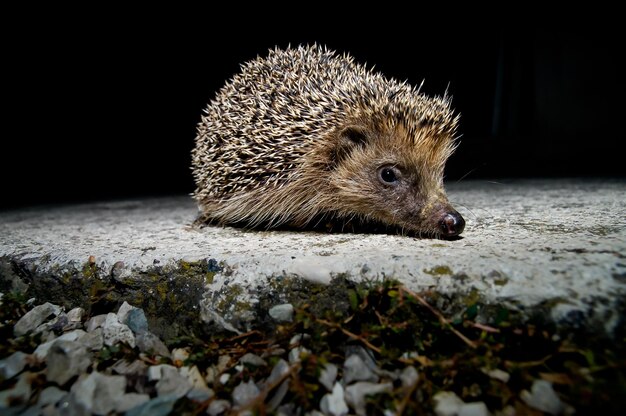West European Hedgehog – Free Stock Photo for Download
All About the West European Hedgehog
The West European Hedgehog, scientifically known as Erinaceus europaeus, is a fascinating nocturnal creature that brings charm and curiosity to our gardens and woodlands. In this description, we will explore its characteristics, habitat, diet, and its role in the ecosystem.
Characteristics of the West European Hedgehog
This small mammal is typically covered in spines, which serve as a defense mechanism against predators. The spines are usually brown or grey, making them blend seamlessly into their natural habitat. Here are some defining features of the West European Hedgehog:
- Size: Adult hedgehogs can weigh between 1 to 2 kilograms and typically measure 20 to 30 centimeters in length.
- Appearance: They have a pointed snout, small eyes, and short legs, with the characteristic spiny coat covering their back.
- Behavior: Hedgehogs are primarily nocturnal, coming out at night to forage for food.
Habitat of the West European Hedgehog
The West European Hedgehog is commonly found in a variety of habitats across Europe. These include:
- Woodlands: Dense forests provide shelter and ample food.
- Gardens: Many hedgehogs thrive in suburban areas, where gardens offer a rich source of insects.
- Grasslands: Open fields provide plenty of ground cover for these shy creatures.
Diet and Feeding Habits
Hedgehogs are known for their varied diet, which primarily consists of:
- Insects: They feed on beetles, caterpillars, and worms.
- Fruits: Hedgehogs enjoy berries and fallen fruit, especially during the summer months.
- Small Animals: Occasionally, they may hunt small mammals or birds.
This diet plays a significant role in maintaining the balance of the ecosystem, as hedgehogs help control insect populations.
The Role of Hedgehogs in the Ecosystem
West European Hedgehogs are important for their environments. Their presence helps:
- Control insect populations: By feeding on pests, they help keep gardens healthy.
- Promote biodiversity: Their foraging activities can aid in seed dispersal.
- Maintain ecological balance: As a species, they play a crucial part in food chains.
Conservation Status
The population of West European Hedgehogs has been declining in some areas due to habitat loss, road traffic, and pesticide use. Conservation efforts include creating hedgehog-friendly gardens, wildlife corridors, and raising awareness about their importance in the ecosystem.
Conclusion
The West European Hedgehog is more than just a cute creature; it is a key player in our environment. By understanding its characteristics, habitat, and dietary needs, we can contribute to its conservation and ensure this charming animal continues to thrive in our world.












